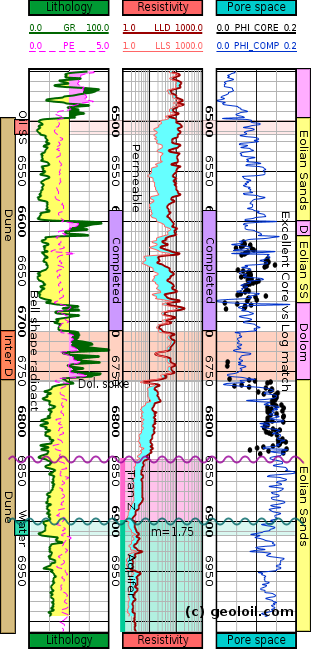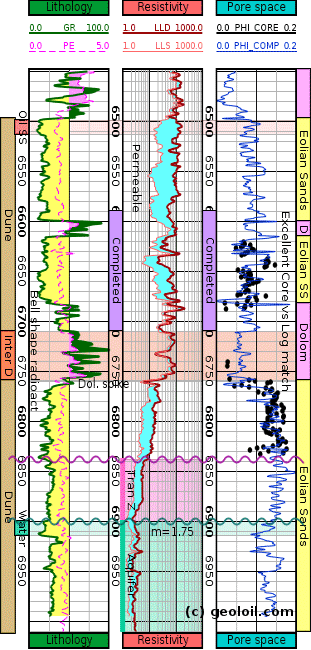The following tips and suggestions are product of more than twenty
years experience in the oil and gas industry. These tips provide proved
specific advices to achieve a consistent geomechanics model.
You may also want to check our general
reservoir modeling tips index as well. These tips are biased to stress unique
capabilities and features of GeolOil software.
You are welcome to provide your feedback, comments or contributions, subject to
editorial review. Just refer the tip number and fill the
contact form.
-
If you have to estimate the stress tensor, make sure you use tensorial math
No matter how expensive or sophisticated seems to be a reservoir modeling
software, if you work on a geomechanics project and need to estimate
stress horizontal directions you should not use a package that only handles
regular, standard scalar geostatistics algebra.
GeolOil geomechanics module properly handles
the estimation of the stress horizontal direction field,
by using tensorial algebra. You can not simply use neither scalar algebra nor
even vectorial algebra to conclude that an average stress direction of an angle
of 0 degrees and an angle of 90 degrees lies on a 45 degrees angle!. That
is wrong for a gemechanics tensor.
-
Filter rock mechanics log properties per lithology or facies
If you have derived rock mechanics properties from log correlations,
then you have the opportunity to easily analyze the depth column data.
However, avoid the temptation to reach global conclusions on the whole
formation column. Instead filter your log curve by lithology and facies, and
compute rock properties summaries per litho-facies. The GeolOil petrophysical
summaries module allows you to
process those filters.
-
Do not heavily rely on rock mechanics extremes
Rock mechanics properties are inherently unstable at extremes.
You may take a plug to the laboratory, measure its UCS (Unconfined
Compressive Strength), record a value, come back the next day to test
a similar neighbor plug (UCS tests are destructive and non-repeatable),
and record a completely different value, perhaps with a difference
or 50% or more.
Minor internal invisible cracks could be the culprit for this behaviour.
Even dynamic rock mechanics property extremes derived from logs could
be unstable, noisy or erratic.
Why do you have to rely on unstable rock mechanics maximum or minimum
property extremes? Instead, compute quantile distribution values. They
are far more stable (lower statistical standard deviation), capture the
behaviour you want, and are their computation is not based on just one
single possible unreliable value.
Consider for instance to compute left and right tail quantiles of 0.05
to 0.10 (left and right percentiles of 5% to 10%).
The GeolOil petrophysical summaries
module allows you to compute quantiles and cutoffs values.
-
Only have old sonic compressional log curve? Explore it
If you don't have modern, full shear wave sonic log curves to derive dynamic
rock mechanics properties, you may still try to define rock index trends.
If a more compacted rock is associated with a shorter sonic travel
time, you may compute a pseudo net-to-gross stiffness rock index.
Define a pseudo "net" stiffness thickness as the sum of rock column interval depths
dz in the formation with sonic transit travel time lower than a cutoff
value (for instance 10% left tail percentile distribution).
Then divide this net thickness by the gross formation or zone thickness.
A ratio close to 1.0 could have a good correlation with real stiffness,
and a ratio closer to 0.0 might be related to weaker rocks.
|






